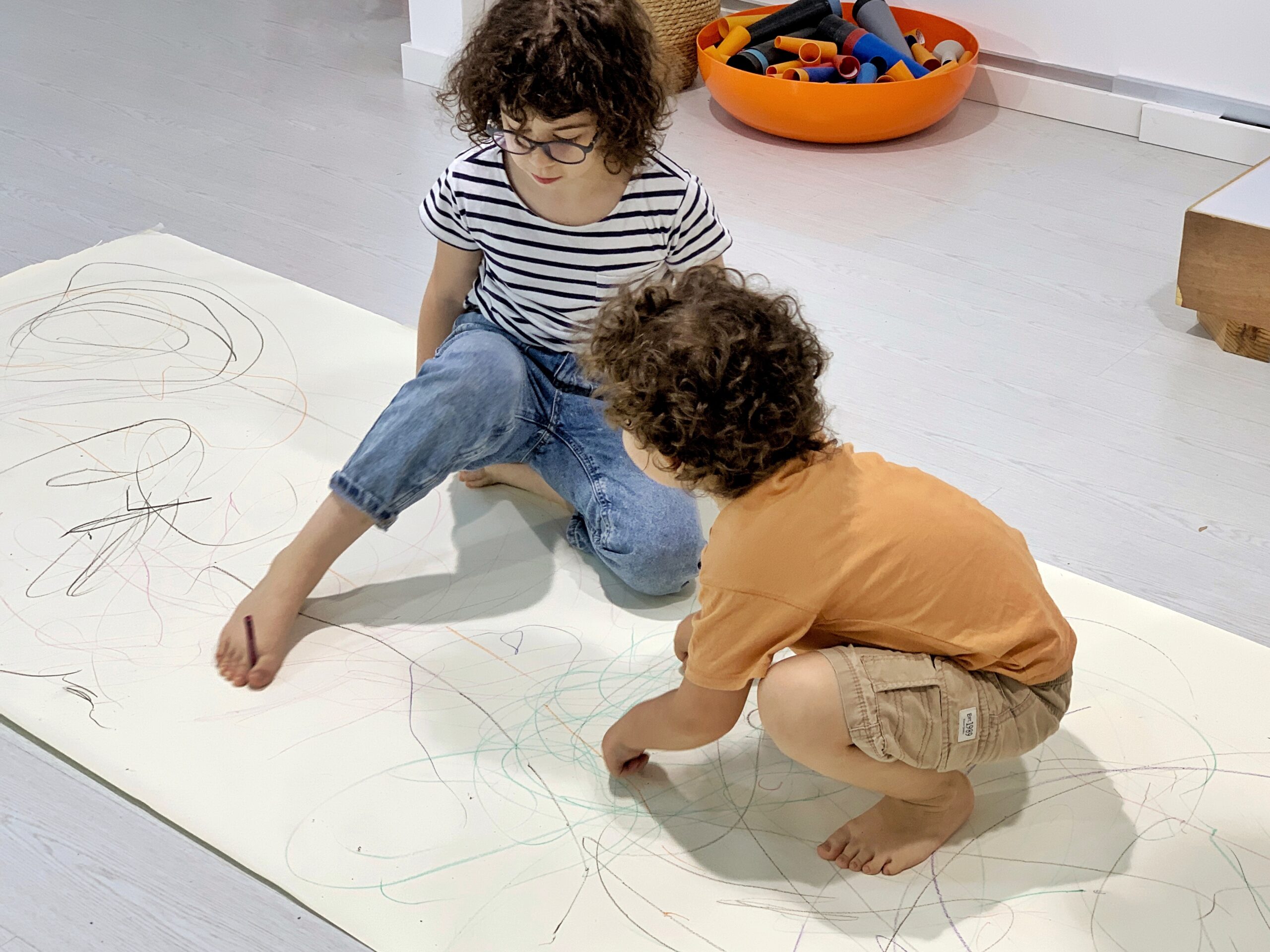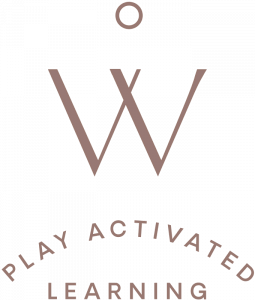When we play with the possibilities of our body’s movement, we are often amazed by what we can achieve. But how much of our body’s moves do we leave unexplored?
With this Play Invitation children are chellenged to explore unusual movements expanding their perception of body flexibility and reach. They can also develop the sense of self, position, and size.
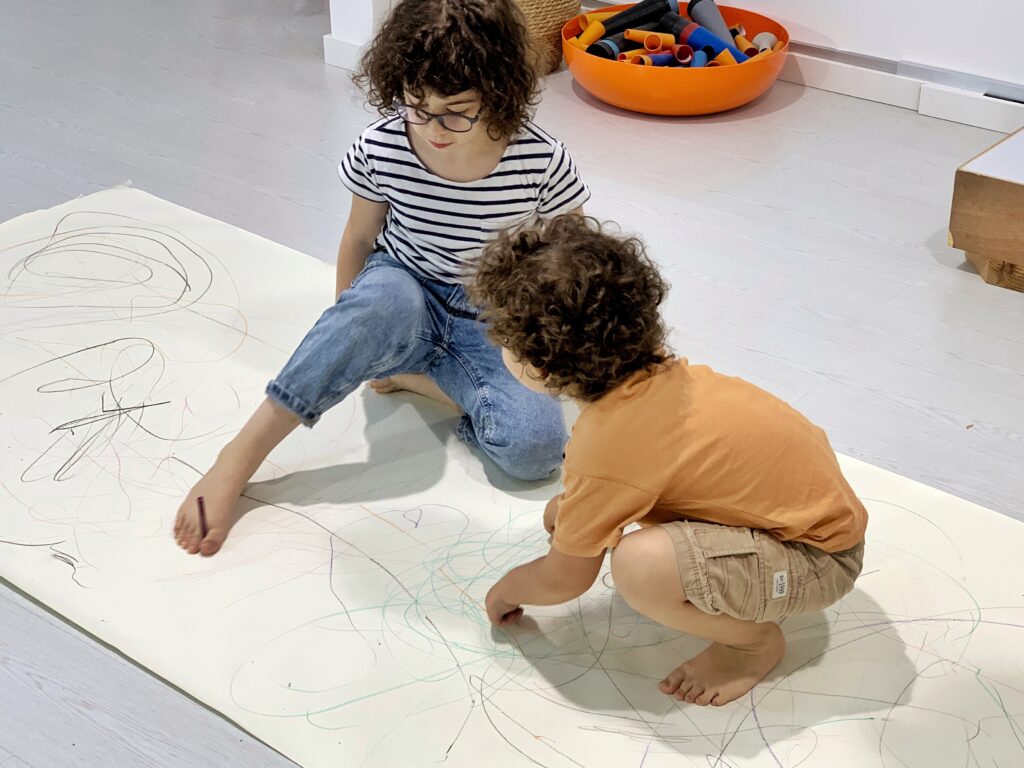
What Could Lead Us to This Play Invitation
- Children have been exploring the movements made by different animals;
- Children are curious about discovering and comparing their body limitations – where they can reach, what they can do;
- Children are excited about drawing outside of the tables, using the floor and walls, and adopting new body positions.
Materials Needed
• Large piece of paper.
• Crayons or oil pastels.
Setting up this Play Invitation
- Place a large piece of paper on the floor with crayons or oil pastels nearby.
Tip: If using oil pastels have a dump cloth or wipes to clean their hands and feet.
How to Explore
- Invite children to watch this video of a young contortionist.
- Dialogue about:
• How flexible is your body?
• How long can we stretch our arms?
• Can you touch your head with your feet? - Ask children to lie down on the paper and explore body movement while registering their actions by making marks. We suggest organizing the group of children in pairs or small groups of three depending on the size of the paper.
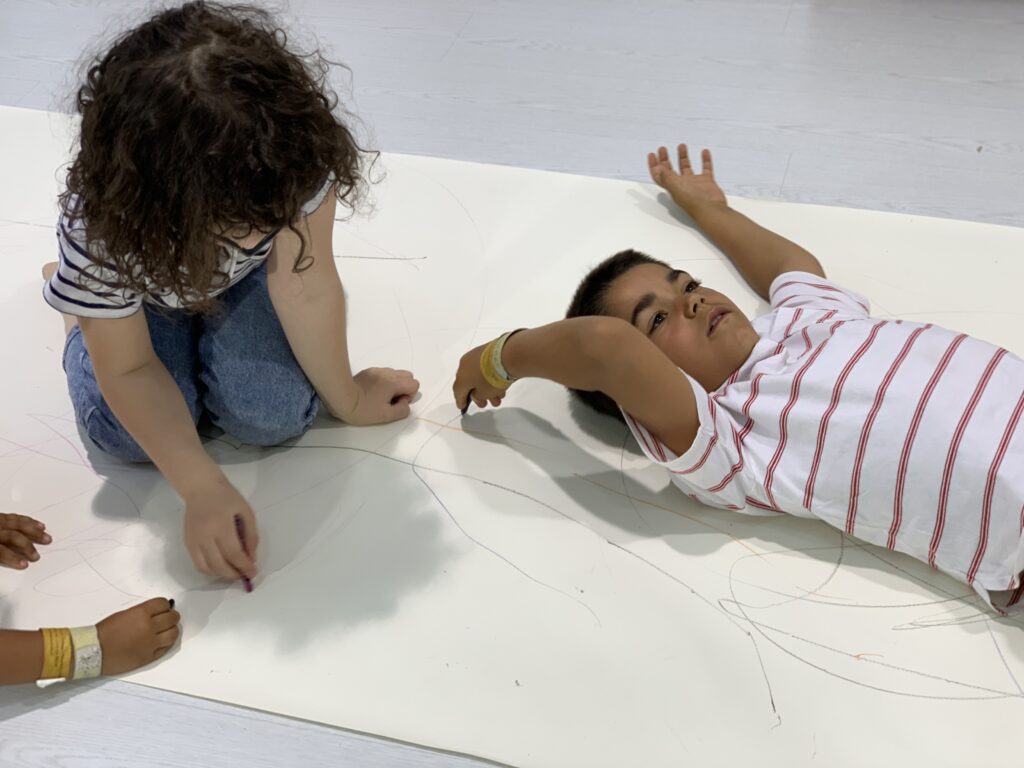
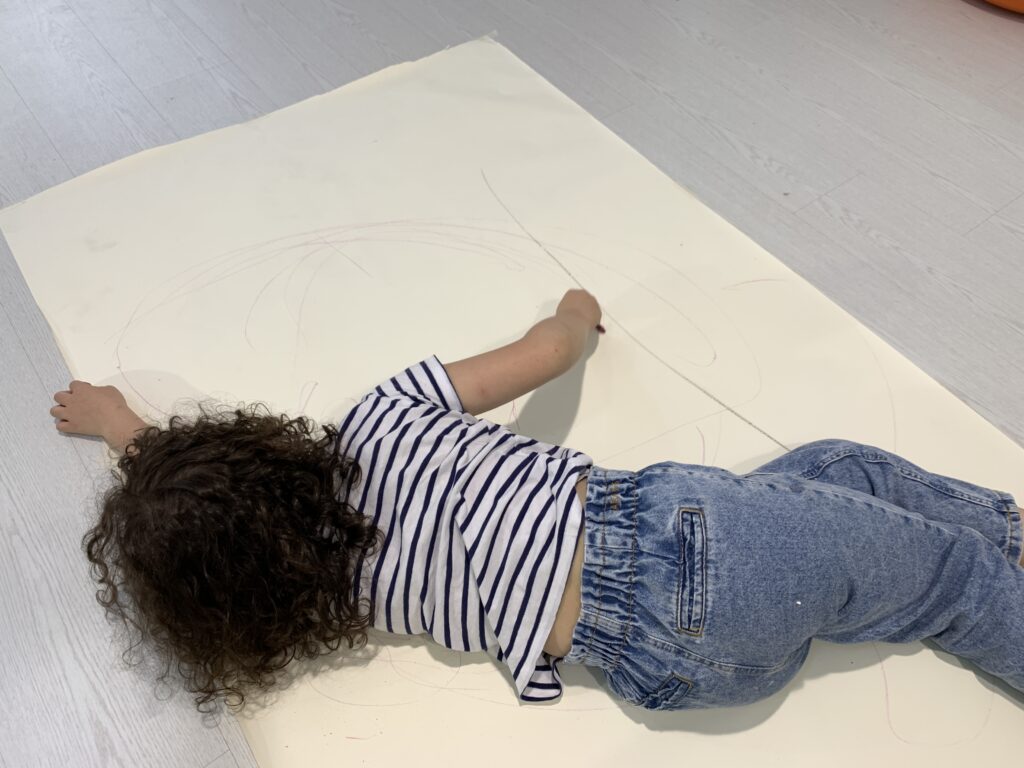
Optional Next Step: Observe the lines on the paper with the children and imagine what movements could have produced each mark.
How to Nurture the Natural Unfolding of the Child’s Identity During This Play Invitation
- Children have the right to use different forms of expression simultaneously. In this proposal, we intersect drawing with the exploration of movement, enhancing the materials, and creating new learning possibilities.
- Children have the right to feel frightened when the exploration of materials departs from what is known to be the norm. Being used to employing the hand to draw on paper over a table, using other parts of the body, and different positions and movements can be quite a challenge. The educator should encourage exploration but never force it.
The Academic Learning Opportunities
- PHYSICAL: Build on their motor skills, reach and flexibility, working in a different position, and visual-spatial relationships.
- SOCIAL: Self and body awareness.
- ART: New techniques for mark making, exploring drawing and self-expression, and new ways to use materials.
Extensions
- Challenge children to a yoga class. Invite someone from your community to lead the class, or use a YouTube video or reference images to lead it yourself.
Book Recommendation
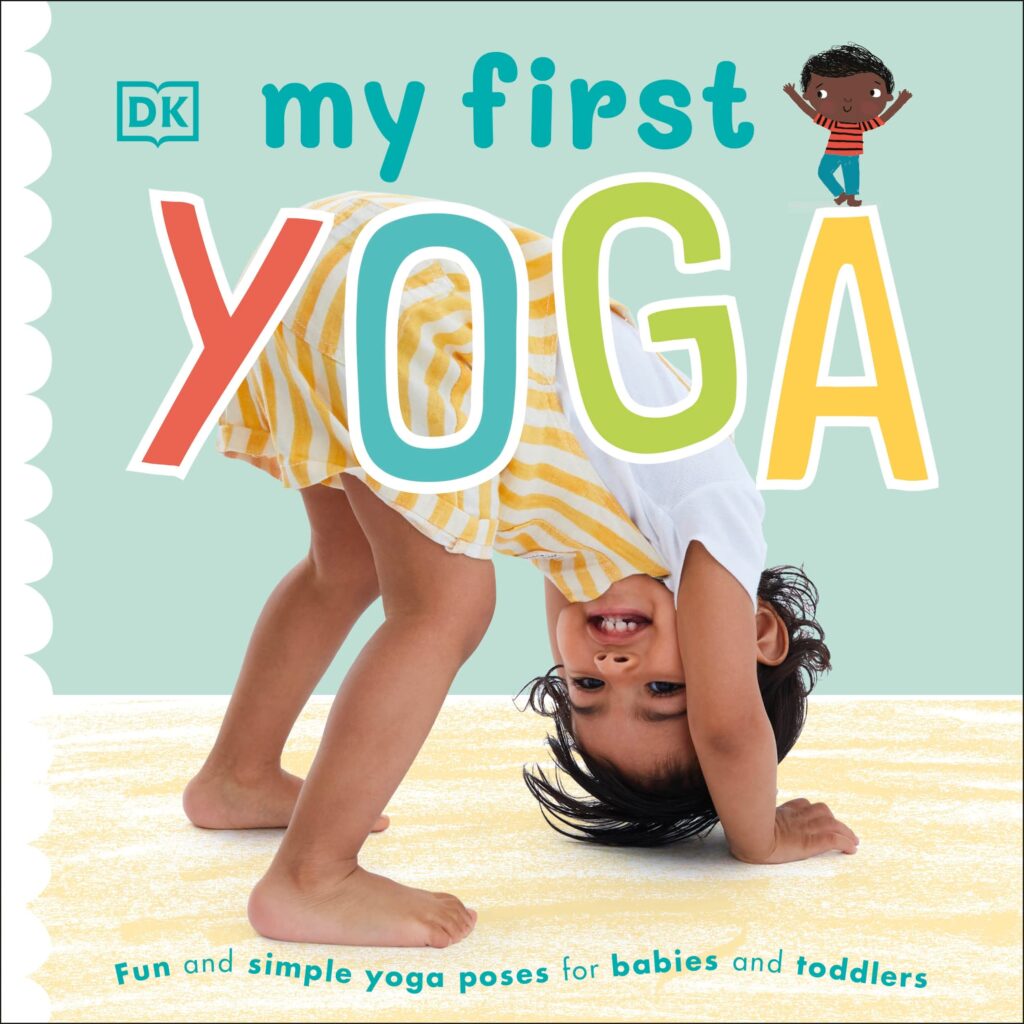
An introductory book to Yoga with easy poses that children can interpret alone or with you.
